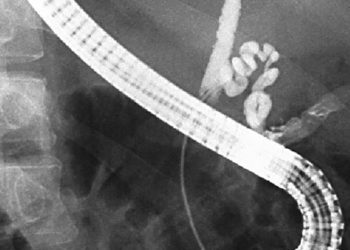Time-restricted eating may improve glycemic control in patients with metabolic syndrome
1. In this randomized controlled trial, patients with metabolic syndrome who underwent time-restricted eating in addition to standard-of-care counseling had a greater decrease in HbA1c levels compared to those who received standard-of-care counseling alone.
2. Patients on a time-restricted eating regimen also had greater decreases in body weight, body mass index, body fat percentage, total fat mass, and low-density lipoprotein cholesterol.
Evidence Rating Level: 1 (Excellent)
Study Rundown: In patients with prediabetes, metabolic syndrome may increase the risk of progression to type 2 diabetes mellitus. Time-restricted eating (TRE) has shown promising results for managing metabolic syndrome in animal studies, but clinical trials have shown mixed findings. This study aimed to examine whether prediabetic patients with metabolic syndrome would benefit from the addition of TRE to their current, standard-of-care (SOC) regimen including nutritional counseling and pharmacological treatment. TRE participants were found to have had on average a 350 kcal decrease in energy intake, largely due to reduced carbohydrate and fat consumption. Compared with patients who only received SOC, patients who underwent TRE saw a larger decrease in HbA1c levels as well as greater decreases in glycemic variability, body weight, body fat percentage, and low-density lipoprotein (LDL) cholesterol. Notably, a greater decrease in lean mass was not seen. Further, over 60% of participants in the TRE group saw improvement at least one of the factors used to assess metabolic syndrome—HbA1c, fasting glucose, systolic blood pressure, diastolic blood pressure, waist circumference, BMI, high-density lipoprotein (HDL), and triglycerides—as compared to around half of participants in the SOC group. There were no major changes in sleep, quality of life, or depression in either of two groups. The generalizability of this study was limited by its three-month duration, its inability to adjust for factors beyond age, and the lack of an active control group. Nevertheless, these findings suggest that TRE, when added to SOC, can be effective in regulating glucose levels and improving metabolic health in patients with metabolic syndrome.
Click to read the study in AIM
Relevant Reading: Ten-hour time-restricted eating reduces weight, blood pressure, and atherogenic lipids in patients with metabolic syndrome
In-Depth [randomized controlled trial]: This single-center, mixed design randomized controlled trial investigated the efficacy of TRE added to SOC compared with SOC alone. Inclusion criteria included age 18-75 years, a diagnosis of metabolic syndrome, a BMI between 25-41 kg/m2, and glucose (5.56-6.95 mmol/L) or HbA1c (5.7%-7.0%) suggestive of prediabetes. Exclusion criteria included an unstable medication regimen, pregnancy or breastfeeding, and an interrupted sleep pattern. Primary outcomes were HbA1c and glycemic characteristics such as fasting blood glucose, fasting insulin, and glycemic variability. Secondary outcomes included LDL cholesterol, HDL cholesterol, triglycerides, high-sensitivity C-reactive protein (hs-CRP), and trunk fat mass. Outcomes were recorded at baseline and after three months. A total of 122 patients were randomly assigned in a 1:1 ratio to intervention or control, and 108 completed the full 12-week study. HbA1c changed by -0.12% (95% confidence interval [CI], -0.19 to -0.05) in the TRE group and by -0.02% (CI, -0.09 to 0.04) in the SOC group (between-group difference, -0.10%; CI, -0.19 to -0.003). The TRE group also had numerically greater decreases in fasting glucose, fasting insulin, and mean glucose as compared to the control group, although these differences did not meet the threshold for statistical significance. With regard to body composition, the TRE group had greater decreases in BMI (between-group difference, -0.77; CI, -1.37 to -0.17), body fat percentage (between-group difference, -1.25; CI, -2.12 to -0.38), and total fat mass in grams (between-group difference, -1801; CI, -2871 to -731). While the TDE group had a greater decrease in LDL (between-group difference in mmol/L, -0.24; CI, -0.42 to -0.05), there was no significant difference between groups in HDL, triglycerides, hs-CRP, or blood pressure. In summary, TRE in conjunction with SOC was associated with significant improvements in glycemic control and body composition among prediabetic patients with metabolic syndrome.
Image: PD
©2024 2 Minute Medicine, Inc. All rights reserved. No works may be reproduced without expressed written consent from 2 Minute Medicine, Inc. Inquire about licensing here. No article should be construed as medical advice and is not intended as such by the authors or by 2 Minute Medicine, Inc.




![Active smoking cessation intervention may provide tangible results [Project CLIQ]](https://www.2minutemedicine.com/wp-content/uploads/2014/12/smoking-e1418644951268-350x250.jpg)


